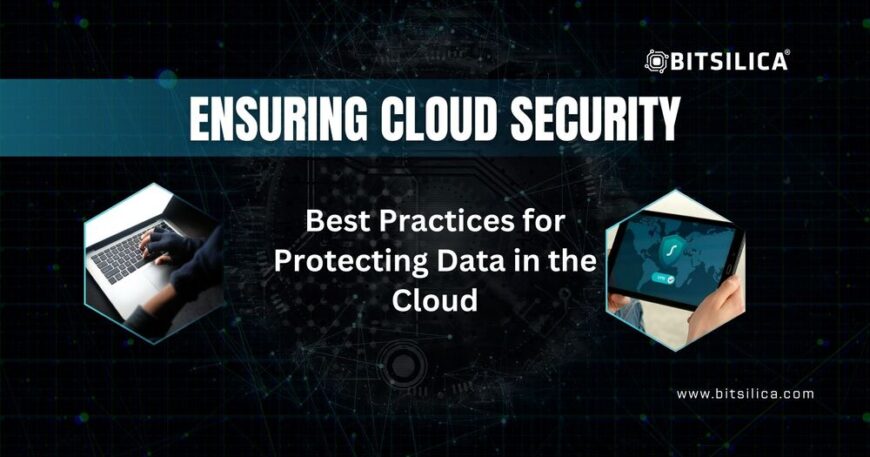Ensuring Cloud Security: Best Practices for Protecting Data in the Cloud
Introduction
As more organizations migrate their operations to the cloud, securing cloud environments becomes increasingly critical. Cloud security involves protecting data, applications, and services hosted in the cloud from various cyber threats. This blog post will explore best practices for cloud security, helping you safeguard your data and maintain compliance with regulatory requirements.
Understanding Cloud Security
Cloud security encompasses the policies, technologies, and controls deployed to protect data, applications, and infrastructure in cloud computing environments. It addresses the unique security challenges posed by the cloud’s scalable and dynamic nature.
Key Components of Cloud Security:
• Data Protection: Ensuring data confidentiality, integrity, and availability.
• Access Control: Managing who can access cloud resources and what they can do.
• Compliance: Adhering to legal and regulatory requirements for data protection.
Example: In 2019, a major data breach at a financial services company exposed sensitive customer information stored in the cloud due to misconfigured access controls. This incident highlighted the importance of robust cloud security measures.
Implementing Strong Access Controls
Effective access controls are essential for protecting cloud resources from unauthorized access and potential breaches.
Best Practices:
• Role-Based Access Control (RBAC): Assign access permissions based on users’ roles within the organization.
• Multi-Factor Authentication (MFA): Require MFA for accessing cloud resources to add an extra layer of security.
• Principle of Least Privilege: Grant users the minimum level of access necessary to perform their duties.
Example: A healthcare organization implemented RBAC and MFA for its cloud applications, significantly reducing unauthorized access incidents.
Encrypting Data
Encryption is vital for protecting data stored in and transmitted through the cloud. It ensures that even if data is intercepted, it remains unreadable without the decryption key.
Best Practices:
• Data at Rest: Encrypt data stored in cloud storage using strong encryption algorithms.
• Data in Transit: Use TLS/SSL encryption to protect data being transmitted over networks.
• Key Management: Implement robust key management practices to control access to encryption keys.
Example: A multinational corporation avoided a potential data breach by encrypting all sensitive data stored in its cloud infrastructure, ensuring that unauthorized access did not compromise the data.
Regularly Updating and Patching
Cloud Systems Keeping cloud systems up to date with the latest security patches and updates is crucial for protecting against known vulnerabilities.
Best Practices:
• Automatic Updates: Enable automatic updates for cloud services to ensure timely application of security patches.
• Patch Management: Implement a patch management process to regularly apply updates to cloud applications and infrastructure.
• Vulnerability Scanning: Conduct regular vulnerability scans to identify and address potential security weaknesses.
Example: A software company mitigated security risks by implementing a rigorous patch management process, ensuring that all cloud systems were updated promptly.
Monitoring and Logging Cloud Activity
Continuous monitoring and logging of cloud activity help detect and respond to potential security incidents in real-time.
Best Practices:
• Cloud Monitoring Tools: Use cloud-native monitoring tools to track and analyze cloud activity.
• Log Management: Maintain detailed logs of cloud access and activity and regularly review them for suspicious behavior.
• Security Information and Event Management (SIEM): Implement SIEM solutions to aggregate and analyze log data, providing real-time alerts and insights.
Example: A tech company detected a potential data breach early by using SIEM solutions to monitor cloud activity, allowing for a swift response and mitigation.
Ensuring Compliance with Regulations
Compliance with legal and regulatory requirements is essential for protecting sensitive data in the cloud and avoiding penalties.
Best Practices:
• Identify Relevant Regulations: Determine which regulations apply to your organization based on industry, location, and data type.
• Compliance Audits: Conduct regular compliance audits to ensure adherence to regulatory requirements.
• Document Policies and Procedures: Maintain detailed documentation of cloud security policies and procedures to demonstrate compliance.
Example: A financial institution avoided regulatory fines by conducting regular compliance audits and maintaining comprehensive documentation of its cloud security practices.
Educating Employees on Cloud Security
Training employees on cloud security best practices ensures they understand how to protect data and applications in the cloud.
Best Practices:
• Regular Training Sessions: Conduct ongoing training sessions on cloud security topics.
• Role-Based Training: Tailor training content to different roles within the organization to provide relevant information.
• Security Awareness Campaigns: Implement security awareness campaigns to reinforce the importance of cloud security.
Example: An e-commerce company reduced security incidents by 40% after implementing regular cloud security training and awareness campaigns for its employees.
Ensuring cloud security is vital for protecting data, applications, and services hosted in the cloud. By implementing strong access controls, encrypting data, regularly updating and patching systems, monitoring cloud activity, ensuring compliance with regulations, and educating employees, organizations can significantly enhance their cloud security posture. Stay vigilant and proactive in securing your cloud environments to safeguard against evolving cyber threats.





